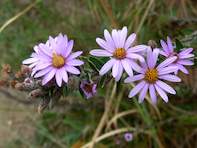Athrixia phylicoides, also called Bush tea (Eng.) Boesmanstee (Afr.), Icholocholo, itshelo, umthsanelo (isiZulu), with its soft dark green foliage and purple daisy-like flowers is a popular garden plant with health benefits and is indigenous to southern and central Africa.

Mostly wild-harvested, some small commercial plantings have been established as test sites in the KwaZulu-Natal, Mpumalanga and Limpopo provinces in South Africa.
The shrub grows wild in the eastern parts of South Africa and is found in rocky and sloping habitats from grassland to forests. Best propagated from cuttings, it is hardy and like full sun.
Benefits of Bush Tea
Traditional uses of Athrixia phylicoides include brewed as a tea (hence the name Bush tea), chewed for relief of sore throats by the Sotho and Xhosa people, while the Venda drank extracts of the roots and leaves to expel parasites.
The stems, stripped of the leaves, are made into sturdy brooms. It was also used for cleansing and purifying the blood, treating headaches and as a gargle for throat infections and loss of voice. In some parts of Southern Africa it is believed to be an aphrodisiac.
There is little information available on the antibacterial and antifungal compounds present in Athrixia, although its traditional uses allude to possible antimicrobial efficacy. 2 It was also used to treat heart problems, diabetes, diarrhoea and for treatment of venereal diseases.
South African research indicates a relative low yield of an essential oil with a flavour profile of vanilla, caramel and honey. These aromas, however, are not intense enough for use of Athrixia in the perfume industry, but can have applications as a possible flavourant in foods and drinks. The leaves could have commercial value as a antioxidant-rich caffeine-free herbal tea.